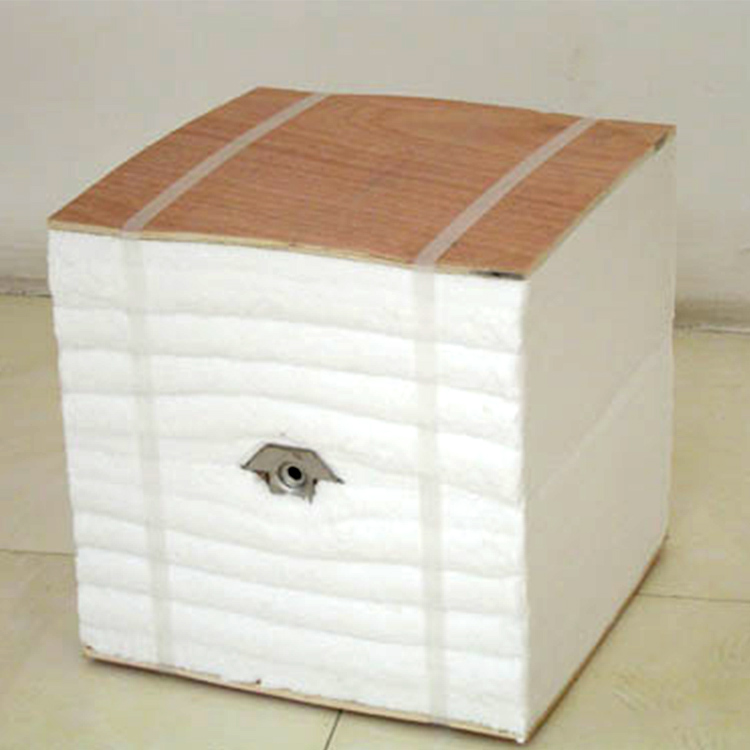Enhancing Tundish Operational Safety: Chemical Corrosion Resistance Advantages of Sunrise Vermiculite Composite Insulation Boards in High-Temperature Environments
20 10,2025
Product related content
Excessive tundish shell temperatures pose significant risks to production safety, energy efficiency, and molten steel quality consistency. This article provides an in-depth analysis of Sunrise vermiculite tundish insulation boards, highlighting their superior chemical corrosion resistance, low thermal conductivity, and high thermal stability. Serving as a crucial third-layer insulation, these composite boards effectively reduce outer shell temperature by up to 50°C, minimize heat loss, and significantly enhance continuous operation safety. Supported by real-world steel plant case studies, the solution demonstrates substantial energy savings and equipment longevity improvements, empowering steel enterprises to achieve both energy conservation and intrinsic safety objectives.

Enhancing Ladle Operational Safety: An In-depth Analysis of Sunrise Vermiculite Composite Insulation Boards’ Superior Chemical Erosion Resistance in High-Temperature Applications
The steelmaking ladle is a critical component exposed to extreme thermal and chemical environments. Excessive ladle shell temperatures not only jeopardize safety on the production floor but also contribute to significant energy loss and inconsistent molten steel quality. Traditional insulation materials often fall short in sustaining long-term durability and thermal management under such aggressive conditions. This article dissects how Sunrise Vermiculite Steel Ladle Insulation Boards redefine high-temperature ladle protection through exceptional chemical erosion resistance, low thermal conductivity, and robust thermal stability, serving as a pivotal third-layer insulation solution.
The High-Temperature Challenge and Its Impact on Ladle Safety and Energy Efficiency
In steelmaking, ladle shells can reach temperatures exceeding 1200°C during operation. Such intense heat accelerates thermal degradation, chemical corrosion, and mechanical wear of traditional insulation layers. The direct consequences include:
- Increased risk of refractory failure, leading to safety hazards such as shell leaks or ruptures
- Elevated external shell temperatures raising ambient hazards and complicating handling procedures
- Substantial heat loss that inflates energy consumption and operational costs
- Reduced molten steel temperature stability, affecting product consistency and quality
Understanding these factors underscores the imperative for insulation materials that not only withstand high thermal stress but also resist chemical invasion from slags and reactive gases pervasive in steel plant atmospheres.
The Limitations of Conventional Insulation Materials in Ladle Applications
Conventional ladle insulation—primarily fireclay bricks, ceramic fibers, and alumina-based boards—offers moderate thermal insulation but exhibits vulnerabilities:
- Chemical Degradation: Many traditional materials are prone to slag penetration and corrosive atmosphere attack, resulting in spalling and structural weakening.
- Thermal Conductivity: The moderate to high thermal conductivity in these materials leads to higher heat leakage and increased ladle shell temperatures.
- Thickness & Weight: Achieving adequate insulation often demands thicker layers (20-30mm or more), adding weight and reducing handling efficiency.
These shortcomings aggravate operational downtime, maintenance costs, and safety risks, emphasizing the need for an innovative insulation solution optimized for harsh ladle environments.
Sunrise Vermiculite Steel Ladle Insulation Boards: Core Technical Advantages
Sunrise’s proprietary vermiculite composite insulation board is engineered explicitly for the demanding conditions inside a ladle’s third insulation layer. Its technical edge lies in three principal attributes:
| Technical Feature |
Performance Metric |
Industry Impact |
| Chemical Erosion Resistance |
Withstands aggressive slag and gas exposure up to 1400°C without material degradation |
Extends insulation lifespan by over 30% vs. conventional boards |
| Thermal Conductivity |
0.12 W/m·K at operating temperature (approx. 1200°C) |
Reduces heat loss, maintaining ladle shell surface temperature 40-50°C lower |
| Compact Thickness |
10-18 mm thickness replacement for 25 mm traditional boards |
Lighter assembly, facilitating ladle handling and installation efficiency |
These combined features empower steel enterprises to achieve enhanced ladle insulation performance with lower thermal stress on the shell and improved operational safety.

Real-World Case Study: Quantifiable Energy Savings and Safety Improvements
A leading steel plant in China integrated Sunrise's vermiculite insulation boards into their ladle maintenance cycle as a third insulation layer. After six months of continuous operation, the following measurable benefits were observed:
- Ladle Shell Temperature Reduced: Up to 50°C lower external shell surface temperature compared to prior insulation setups.
- Energy Savings: Monthly thermal energy consumption decreased by approximately 8%, equivalent to 15-20 metric tons of standard coal saved.
- Equipment Longevity: Visible reduction in refractory spalling and maintenance downtime, extending ladle service life by nearly 20%.
- Operational Safety: Reduced fire hazard risks and improved working environment safety due to less radiant heat exposure.
These outcomes highlight Sunrise vermiculite boards as a strategically vital component for ladle insulation upgrades aimed at sustainable production.

Practical Installation and Maintenance Guidelines for Optimal Performance
To maximize the benefits of Sunrise vermiculite insulation boards, steelmakers should adhere to established protocols:
- Precision Installation: Maintain consistent board thickness between 10-18 mm to ensure uniform thermal resistance; use compatible high-temperature adhesives and mechanical fasteners.
- Regular Inspection Cycles: Conduct monthly visual inspections focusing on board integrity, chemical attack signs, and physical damages.
- Timely Anomaly Handling: On detection of corrosion or cracks, initiate partial board replacements immediately to prevent thermal bridging and safety hazards.
- Environmental Controls: Manage slag splash and gaseous exposure by complementary ladle operating procedures to limit aggressive media contact with insulation.
Adhering to these actionable steps helps sustain insulation performance and prolong ladle operational uptime.

Strategic Alignment with Green Steelmaking and Carbon Reduction Initiatives
Sunrise's vermiculite boards not only address industrial safety and efficiency but also align with the global shift towards greener and more sustainable steel production:
- Carbon Emission Reduction: By minimizing thermal energy waste, the solution reduces indirect CO₂ emissions proportional to energy savings.
- Resource Efficiency: Extending ladle life lessens the demand for frequent refractory production and disposal, mitigating material consumption.
- Compliance with Regulations: Supports adherence to increasingly stringent environmental policies and workplace safety standards worldwide.
In this evolving landscape, Sunrise vermiculite insulation boards empower steel manufacturers to future-proof their operations with sustainable and responsible technologies.






